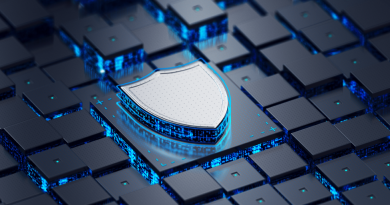Securing Remote Work: More Connectivity and Visibility


When remote work becomes not just an option but the only choice, it raises critical technical questions about how to not only make the transition feasible, but also how to keep it secure. Mark Liggett, CEO of Liggett Consulting and longtime IT and cybersecurity player, sat down with Trend Micro to share his thoughts on the importance of taking into account connectivity and visibility in creating a secure work from home (WFH) strategy.
The coronavirus pandemic has ushered the abrupt shift to WFH setups in many companies across the globe. Given his deep experience as a leading expert in the IT and cybersecurity sphere for over 20 years, Mark Liggett recognized the challenges and possibilities of moving forward with this setup.
The key concerns here are connectivity and visibility. To require both might seem like a tall order for remote work setups that involve geographically dispersed team members, but it is non-negotiable to ensure security.
Connectivity as a challenge to remote work
There can be technological barriers to employees effectively carrying out their work at home, with connectivity as one of the top concerns that companies need to deal with. Can employees connect to their office systems from home? If yes, how quickly and efficiently can they do this?
The next things to check are the tools needed to work successfully. Whether employees take home machines from the office or use their personal devices at home, this presents a security concern — since endpoints remain one of the most viable means of entry for compromise.
Employees might use personal devices differently from the way they use company-issued ones; at home, they might access a variety of sites and download apps for personal activities, thus exposing themselves to a wider variety of threats.
Internet bandwidth is another point of concern. Unlike in the office, where connection can be configured to be fast and reliable, employees’ home internet connections might vary in speed. This may cause people to resort to other options, such as unsecure hotspots or their phones. It is therefore vital to ensure that the employees’ work is not interrupted and that everything is made available to them despite bandwidth limitations.
Threats against remote work
While connectivity is necessary to facilitate remote work, it can also serve as an attack vector. This is particularly concerning in remote work, as home environments – where security might be less prioritized – are used to connect to office systems. Additionally, the compromise could come from sources that appear less suspicious, such as printers or other internet-connected devices.
Besides dealing with the realities of the home environment, you need to be cognisant of the uptick in email-based threats, such as Business Email Compromise (BEC), phishing, and credential harvesting, with some attacks even using the pandemic and tools used in WFH setups to compromise endpoints.
Ensuring visibility
Visibility is another topic that Liggett is truly passionate about: “Visibility — and this is a cornerstone of my security practices – is everything.” You can’t fight what you can’t see.
Some attacks don’t exhibit obvious signs of infection or intrusion right away, while some symptoms of compromise are triggered by specific user actions. Some threats can linger for weeks and even months; by the time the user detects the obvious signs of a threat, the system might have already long been compromised and the data would have already been stolen. This shows the importance of visibility and behavior monitoring to catch threats early on.
Use these insights as you continue to alter your security strategy to fit this new way of the world and read more about Liggett Consulting’s journey to WFH.
Read More HERE



